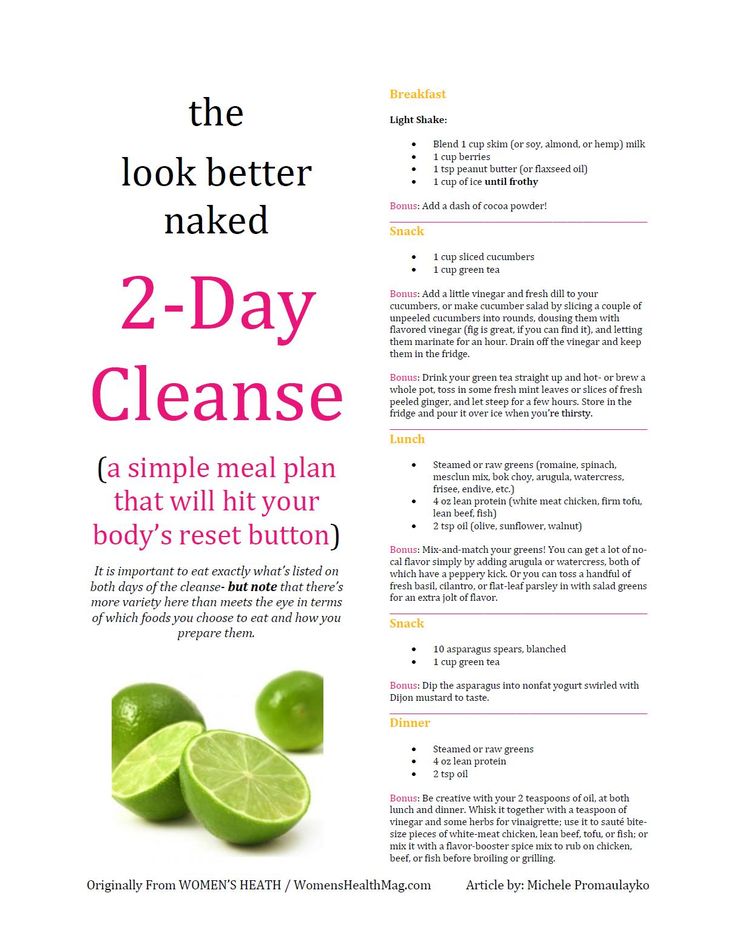When to stop hand feeding a baby quaker parrot
How to take care of Quaker Parrot babies
Baby Quaker also look up to his parent for all his needs as that is what all babies do. But are you ready to take care of your little birdie? Let us make a general checklist of all the initial care a baby Quaker might need. Rest, it is all on-the-job training.
Baby Quaker’s home requirements
A plastic storage bin, a wooden box or a glass fish tank are the best options for making a brooder for baby Quakers. Clean the box thoroughly before placing Quakers inside. Perching comes naturally to the whole Quaker parrot breed, so the height of brooder shall be kept at least 14 inches. If a box with such height cannot be provided to the baby Quakers, it is advised to keep the brooder covered with only little openings for ventilation. A wooden cover with some punched holes can serve the purpose.
The size of brooder depends largely on the number of baby Quakers that need housing. It is recommended to provide 0.75 square feet of area per bird up to the age of 6 weeks. Afterward, an area of 1 square foot per bird would be adequate for their healthy growth. Baby Quakers can be shifted to the normal cages at the age of 10 weeks.
The placing of the brooding box plays an important role in the safety of baby Quakers. Keeping the box out of reach of predators is essential. Keep in mind that your other pets like cats and dogs are also predators for these newly-born birds. Also, ensure to keep the box away from heavy traffic areas of your house.
Maintaining a baby Quaker’s hygiene
Keeping the baby Quaker’s surroundings clean and hygienic is essential to keep the baby Quaker healthy. The babies are good at creating a mess in the brooder, they poop big time. They are also messy with food and water.
Maintaining a clean environment in the brooder, therefore, becomes all the more important. Dirty surroundings serve as a breeding ground for disease-causing bacteria. If you are using cardboard boxes, they need to be changed daily as they will become wet with the Quaker’s droppings and water splashed out from the water dish. Litter inside the brooder needs to be replaced frequently throughout the day.
Litter inside the brooder needs to be replaced frequently throughout the day.
Hand-feeding the baby Quaker
Since Quakers at this stage of life cannot eat their food on their own from a food dish, they need to be hand-fed until they grow up. Feed them the store-bought formula containing all the nutrients with the help of a tube or syringe made for the purpose. For newly-born Quakers, commercial formulas are the healthiest diet one can provide for. One to two tablespoon of the mix is sufficient for a single meal. Two meals per day are appropriate for Quaker babies.
More about Quaker Parrot Food
For knowing the exact amount of feeding per meal, it is recommended to weigh the Quaker baby using a gram scale regularly. Maintain a healthy weight as recommended by the vet according to the growth stage of Quaker.
Keeping them full for the day and emptying overnight is preferred except in case the bird is under the age of 10 days.
Hand-feeding is an excellent opportunity to spend time with the little Quaker and develop a strong bond.
Quaker parrot growth stages
Just like human beings, Quaker parrots also go through several growth stages during their entire life-cycle. Understanding these stages will throw some light on how to care for them.
Neonatal and Juvenal stage
When born, Quaker parrots are completely dependant on their parents for all their survival needs. Their feathers grow between the age of four to six weeks. And this growth corresponds with their physical growth too. They are fully grown by the time their feathers form. They start exploring the world with their beak at this stage.
After these initial six weeks, Quaker species start developing social skills. They start interacting a little with their parents. The bird starts exploring new places to hide, things to play with, etc. At this stage of their life, they can be introduced with toys that stimulate their senses.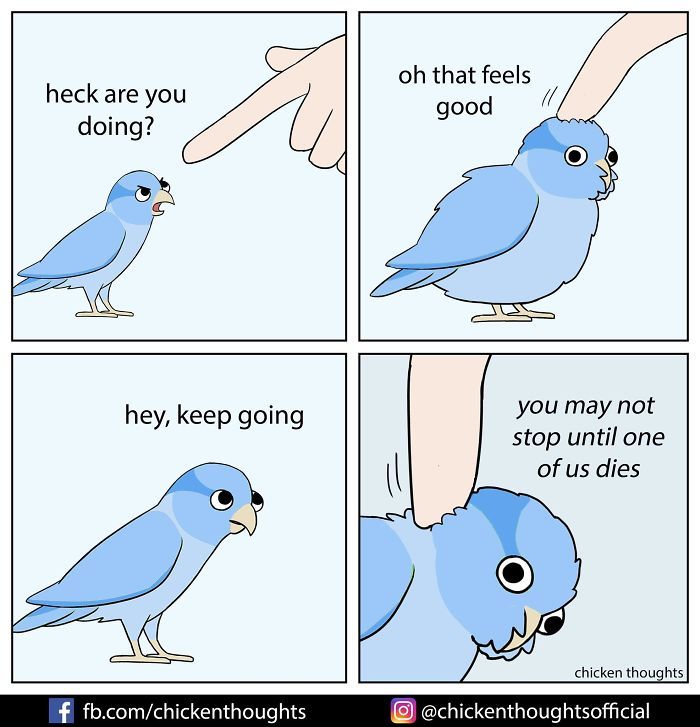 Such toys help in their brain development process. Since Quaker parrots are extremely curious creatures, it is recommended to introduce them with new toys every few weeks to keep them from getting bored. Colorful toys made from natural substances like untreated wood are the safest option to keep Quakers from inhaling toxins.
Such toys help in their brain development process. Since Quaker parrots are extremely curious creatures, it is recommended to introduce them with new toys every few weeks to keep them from getting bored. Colorful toys made from natural substances like untreated wood are the safest option to keep Quakers from inhaling toxins.
Quaker parrot Adult stage
Quaker parrots enter the Adult stage between the age of two to four years. At this stage, their hormonal activity increases substantially. They are grown-up now to become an independent creature. Quakers can be shifted to their cage from the brooder at this stage of life. They can carry out their daily activities with much less help from their owners. They also start interacting with other family members, which is again a good sign of mental growth. It is advised to make the Quaker baby interact with more people in the family to protect him from a mental block in the absence of Quaker owner.
Quaker parrots enter the age of maturity after this stage of life growth.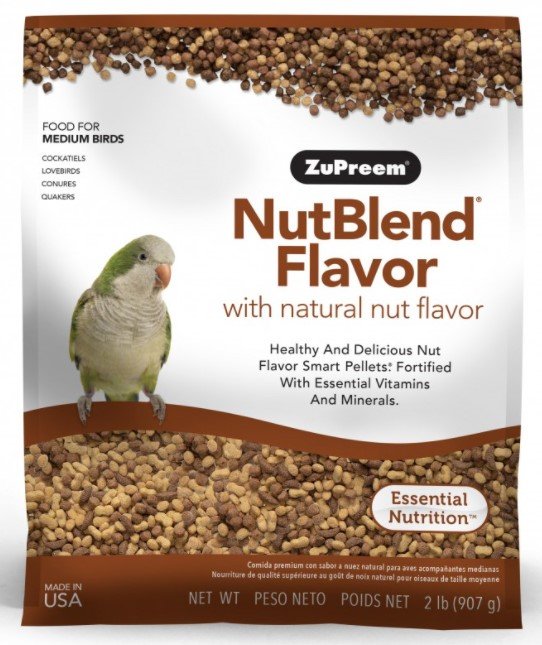 They are handled normally as adult Quakers then.
They are handled normally as adult Quakers then.
Regular medical check-ups
Just like human babies, Quaker babies also need proper medical care. It is essential to get a regular medical check-up done to ensure the bird’s good health. Make regular trips to the vet a routine from the beginning. Prevention is always better than cure and these trips would be the first preventive measure towards it.
Maintaining constant environmental temperature
The baby Quakers are susceptible to illness even with a slight change in environmental temperature. A constant temperature is required to be maintained inside the brooder. This can be done with the help of a heating pad or a 250-watt infrared heat bulb or lamp. Most Quaker owners opt for bulbs. Red light is recommended instead of white as white light hinders the sound sleeping of the bird. A grown-up Quaker can tolerate mild changes in temperature.
Some interesting video of Quaker parrot Hatching from an egg. 🙂Quaker parrot egg
🙂Quaker parrot egg
Another Youtube Video about Handfeeding baby parrots:Baby parrots feeding
Care of Quaker Chicks | Belton
Feeding
So, let’s talk about baby Quakers. I pull them from their mother and father at 2 weeks old, and they need to be hand fed for a total of 8-10 weeks before they’re ready to start eating solid foods. That means that every 2 to 3 hours (excluding nighttime) they need to be hand fed a special formula (I use Exact Original Handfeeding Formula).
I usually put them up for sale at 4 weeks old, meaning that you get to be mama bird for at least another month. I have a feeding chart below, it shows how often they need to be fed and how much, according to their age.
Check-ups
Quakers are very hardy birds, but that doesn’t mean they’re invulnerable. They need check ups at an avian veterinary clinic when they are young to make sure they are healthy and happy and will be with you for many years to come.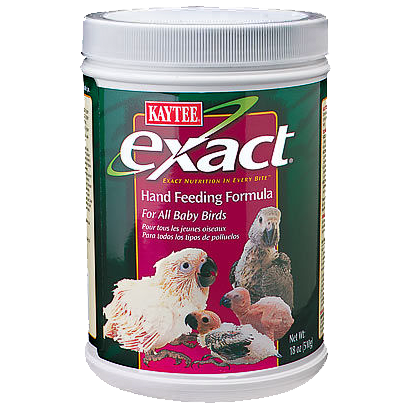 They also need daily weighing; they should be gaining weight every other day until they are weaned, then they will lose a little as they get used to solid food. My adult Quaker weighs 3.40 ounces, but she is a bit smaller than other Quakers her age. Healthy weight for an adult is 3.25 to 4.25 ounces. Abnormal weight loss is the first indicator of sickness, since birds tend to be very good at seeming all right when they’re sick or injured. Oftentimes, once they show symptoms, it may be too late. Keep in mind that even tiny amounts of weight loss can indicate a problem; half an ounce isn’t a lot unless you only have four to begin with.
They also need daily weighing; they should be gaining weight every other day until they are weaned, then they will lose a little as they get used to solid food. My adult Quaker weighs 3.40 ounces, but she is a bit smaller than other Quakers her age. Healthy weight for an adult is 3.25 to 4.25 ounces. Abnormal weight loss is the first indicator of sickness, since birds tend to be very good at seeming all right when they’re sick or injured. Oftentimes, once they show symptoms, it may be too late. Keep in mind that even tiny amounts of weight loss can indicate a problem; half an ounce isn’t a lot unless you only have four to begin with.
Weaning
After about 6 weeks, your Quaker will start to pick up objects in her mouth and kinda mouth them and experiment with putting food in her mouth. At this stage, you should give her access to soft fruits and veggies, as well as smaller pellets. Once she starts to prefer these to formula (and weaning means that she will not eat as much formula as she used to, and may lose a small amount of weight), give her bigger pellets for her to eat normally.
This is what the formula looks like
These aren't Quakers, but this is what hand-feeding looks like
Housing
Housing Quaker chicks is a bit different than housing adult birds. You will need a small cardboard box, about 1’x1’x1’. Use stuffing (you can buy this at any store, it is usually with sewing and crafting) to make the nest. Get a medium sized clump of stuffing, then using a clean cloth or towel, put the towel over it and shape into a little nest just big enough for your bird. You will need to clean the box at least once a day, as the chick will poop right where they are, and leaving feces in with the bird for too long can culture bacteria and make the bird sick, and possibly die.
When not feeding the baby, keep this box covered and somewhere dark and not too cold. Darkness helps the bird’s eyes fully develop, and you should not be playing with the bird until she is much older and can live in a cage. Feeding time is bonding time for these chickies, you don’t need to play with her to make her love you.
A six week old Quaker in a temporary nest
What to feed a budgerigar? - Sami with Mustache
Most people who have budgies for the first time start out feeding them only grains. But the diet of birds should be varied: you need to include fruits, vegetables and even branches in it.
The second common mistake when feeding a pet is to give him human food, such as cheese or bread.
What products can be included in the pet menu, and which ones can be abandoned forever, we will consider in this article. nine0003
Grain mixtures
Cereals are the basic food for birds. This is the easiest answer to the question of how to feed a new friend.
Grains normalize the work of the digestive tract. Make sure your pet has constant access to food.
You can buy grain mixture at the pet store or make your own. The food is available in transparent and opaque packages. The advantage of the former is that you see the composition and quality.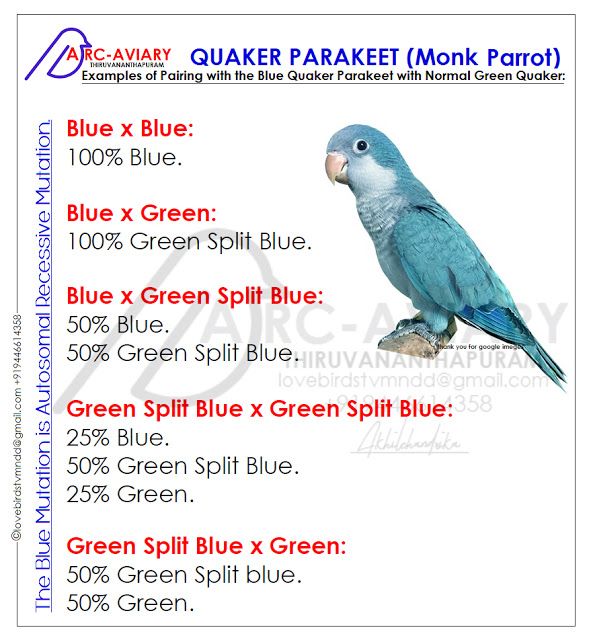
In the second case, it is worth buying from trusted manufacturers. Grains must be sold in vacuum bags. nine0003
The best option is to make your own mixture. Optimal ratio of grains (in percent):
- yellow millet - 50;
- red millet - 25;
- white millet - 15;
- shelled oats - 10.
It is necessary to monitor the state of the mixture. If she has grown old, mold has appeared or bugs have started, you can’t feed the parrot with this.
The healthiest fruits and vegetables for parrots
Budgerigars' favorite treats are fruits and vegetables. They contain vitamins, trace elements and fiber, which are necessary for birds. It is recommended to add these products to their menu all year round.
- Cabbage. The main vegetable for a parrot in winter. It is stored for a long time, contains many useful trace elements. Give the leaves raw, without the stalk. Broccoli, white cabbage or Beijing cabbage are allowed.

- Carrot. Cut into small pieces or rubbed on a grater. Use only fresh vegetables. Bird from carrots receives vitamin C and beta-carotene. You can mix carrots with other vegetables. nine0024
- Cucumbers. Helps to better assimilate the rest of the products. Quench thirst, contain vitamins E, microelements.
- Tomatoes. In the summer season, be sure to include them in the bird's diet. Tomatoes contain vitamin B, ascorbic acid. Give the pulp only ripe fresh fruits. Unripe tomatoes are contraindicated for birds.
- Beets. Contains a large amount of antioxidants. It, like cabbage, is given raw all year round. In addition to saturating the bird's body with vitamin A and C, beets normalize digestion. nine0024
Zucchini is a storehouse of fiber. Be sure to give it raw. Helpful for proper bowel function.
From fruits and berries, you can give a feathered pet:
- bananas,
- apples,
- pears,
- peaches,
- pineapples,
- kiwi,
- citrus fruits,
- pomegranate,
- cherry,
- raspberries,
- strawberries,
- strawberries.

In summer, the parrot can be fed with melon and watermelon.
Fruits and berries must be peeled and pitted. Cut large fruits into pieces. In winter, fresh fruits are replaced by dried fruits, such as raisins or dates.
And now let's take a closer look at the vitamin and mineral composition of fruits:
- Bananas are rich in potassium. This microelement is necessary for pets as well as people. nine0024
- Apples contain many vitamins and enzymes useful for poultry. The use of these fruits normalizes the digestive system. It is advisable to give them every day.
- Pear contains pectin, carbohydrates, iron and phosphorus. Thanks to it, the pet's body is saturated with minerals, energy, and the digestion process improves. When choosing, give preference to hard fruits.
- Peaches improve digestion, contain copper and iron. These fruits are given to weakened birds to stimulate their appetite. nine0024
- Pineapples strengthen the muscular and vascular systems.
 It is recommended to give in canned form.
It is recommended to give in canned form. - Give kiwifruit to pets during beriberi (end of autumn, winter, beginning of spring). The fruit will strengthen the immune system and protect against diseases.
- Pomegranates will ensure the healthy functioning of the budgie's cardiovascular system. The maximum daily allowance reaches 1/6 of the fruit. A few grains are enough for a bird.
- Of the citrus fruits, oranges are recommended: they contain carbohydrates, fiber, and antioxidants. Like kiwi, a great immune boosting food. nine0024
It is worth refraining from persimmons, mangoes, papaya and avocados. What harm they bring to birds, we will understand further.
Herbs and greens
Some types of greens can harm the pet's body. Do not give him parsley, dill and green onions. It is strictly forbidden to feed the budgerigar with tomato tops.
Will bring benefits:
- horse sorrel, nine0023 arugula,
- celery,
- plantain,
- clover leaves.
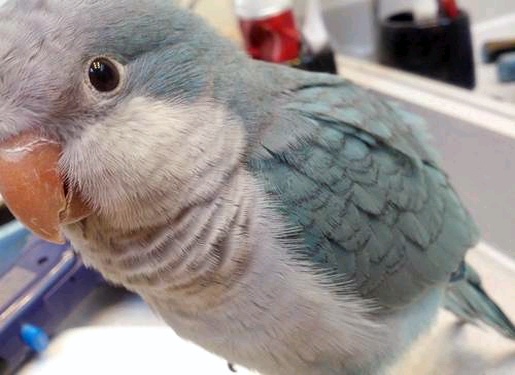
Wild plants cannot be collected near the roadway.
Do not let the parrot peck at houseplants and bouquets - they are toxic to the bird.
Twigs of trees - how to give?
If you have had parrots before, you probably know how they love to “nibble” everything. Therefore, it is worth placing branches of fruit trees in a cage. They will be both a toy and food. nine0003
Choose trees away from roads, industrial areas. Check the branches for resin.
After pruning, the branches are soaked in water for 4 hours, washed and doused with boiling water. Branches of what plants can be given to a parrot?
- apple trees,
- birches,
- willows,
- rowan,
- viburnum,
- sea buckthorn,
- hazel.
You can also cut a bush of currants, raspberries. nine0105
Kashi
Porridge will give the parrot the necessary minerals, normalize metabolism. When cooking, only water is used, without the addition of oil, salt, sugar. Do not use instant cereals.
When cooking, only water is used, without the addition of oil, salt, sugar. Do not use instant cereals.
Cook for your pet only from high-quality buckwheat, oatmeal, lentils, barley. Grains should be boiled for 10 minutes.
You can also give rice and wheat porridge. Their cooking time is 20 minutes.
Germinated sprouts
It is necessary to include sprouted grain in the diet of a parrot so that its body receives vitamins E and B2.
How to cook sprouts at home?
- Fill the bottom of a deep dish with grains, fill with water to cover them a little.
- Change fluid every 4 hours and rinse beans.
- After a few days, sprouts will appear. For a parrot, a shoot up to 2 mm in height is enough. nine0024
- The sprouts are dried before being given to the bird.
Before the first molt, small chicks are given 1 tsp. sprouts 2 times a week. Then once a month.
Mineral additives
The key to feeding a parrot is mineral supplements. For example, a bird will benefit from feed chalk saturated with calcium. You need to buy special chalk for birds, because intended for rodents can harm the health of a parrot. Other sources of minerals: nine0003
For example, a bird will benefit from feed chalk saturated with calcium. You need to buy special chalk for birds, because intended for rodents can harm the health of a parrot. Other sources of minerals: nine0003
- Combined mixtures. Those sold in pet stores contain a 70:30 ratio of shell rock to chalk. Manufacturers often add small amounts of eggshells and charcoal to them.
- Stones. They come with iodine, iron, zinc, magnesium and calcium. These elements are responsible for the health of the skeleton, endocrine glands.
- Sepia (cuttlefish shell). Rich in Na, K, Mg, P, which protect the beak from deformation. Give preference to sepia white with a slight yellow tinge. nine0024
- Organic sand. Consists of crushed shells. Promotes the grinding of food in the goiter.
- Chicken eggshell. Due to the content of potassium, it strengthens the skeleton, creates a protective layer of the shell when laying eggs
- Birch charcoal. Storehouse of calcium and iron.
 It will be a detox for your pet.
It will be a detox for your pet.
Large solid minerals are attached to the bars of the cage, the mixture is poured into a plate.
Rehydration for parrot
Water is an essential element for all living things. When caring for a pet, make sure that the water in the drinking bowl is clean and fresh.
Change fluid every day. Its temperature should be 15-20 degrees. It is better to pour water in small portions.
However, water is not the only way for a parrot to replenish its water balance. There is another one - juicy fruits, vegetables and grass. He receives part of the necessary liquid from these products.
Periodically, to protect against a fungal infection, the parrot is given water with 2-3 drops of lemon vinegar or lemon juice. This amount is calculated for 100 ml of liquid. nine0003
Juices are useful for birds, but only cooked at home. From the list of allowed fruits and vegetables, prepare freshly squeezed juices. They can be diluted with water.
They can be diluted with water.
Natural products spoil quickly - make sure that the juice does not ferment, otherwise it will harm the pet.
Prohibited products for budgerigars
In some sections of the article, products that are prohibited for parrots have already been mentioned. In addition to them, you can not give your pet: nine0003
- salt and sugar;
- nuts of any kind;
- seeds and stones of certain fruits and berries;
- onion and garlic;
- meat products, fish;
- mushrooms;
- coffee, tea;
- dairy products;
- soda;
- alcohol;
- chips, crackers and other fast food.
For chicks aged 3 to 4 months, a boiled egg and cottage cheese are added to the diet. After the first molt, these products are excluded. nine0003
The most dangerous foods for a budgerigar that can lead to his death are avocados, alcohol, chocolate and salt.
Let us consider in more detail why it is forbidden to give the rest of the products from the list.
Herbs such as dill and parsley are high in essential oils. These substances, toxic to the bird, eventually lead to disruption of the functioning of its internal organs.
Opinions differ on spinach. It contains a large amount of oxalate, which binds calcium and other trace elements. Because of this, useful substances are not absorbed, and oxalates are deposited in the form of kidney stones. nine0003
Spinach can be given to birds with healthy organs, but in a minimal amount. If in doubt whether your pet has kidney problems, refrain from this greenery.
It is imperative to peel and pit fruits and berries: apple, pear, and cherry seeds contain cyanide, and pesticides accumulate in the skin of fruits.
Fresh onions and garlic can sometimes be given to your pet as a prophylaxis against parasites and fungi. But in small quantities. Excessive consumption of these vegetables will lead to hemolytic anemia, and subsequently to the death of the animal.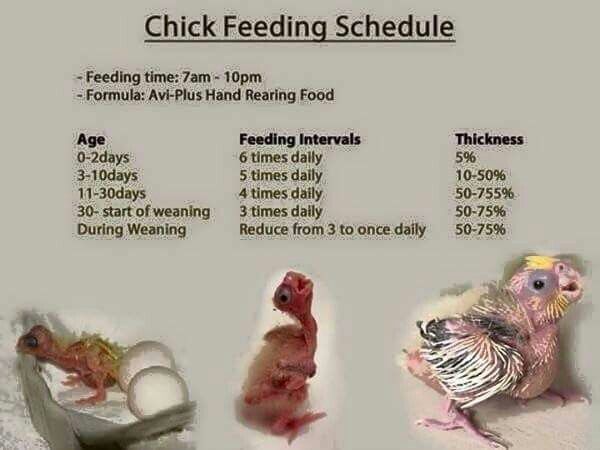 nine0003
nine0003
Coffee and tea contain caffeine, an overdose of which will cause a bird to have a heart attack. This is also the danger of energy and carbonated drinks.
If your parrot is sick, feels weak, it is permissible to give him weak tea: the drink will have a tonic effect.
Mushrooms cause indigestion, and some of their species - liver failure.
Finally, a few more restrictions: nine0003
- The nuts are too fatty.
- Sorrel causes kidney problems.
- Mango and papaya are supplied unripe and therefore contain toxic substances.
The body of a parrot is designed to digest grains, tree bark, fruits and berries. If your pet gets all this, he will be healthy and cheerful.
How to wean a parrot from biting
When choosing birds as pets, many mistakenly believe that caring for birds will not be a hassle: dogs need to be walked, cats also need an eye and an eye, aquarium fish just have time to change the water and maintain the necessary microclimate.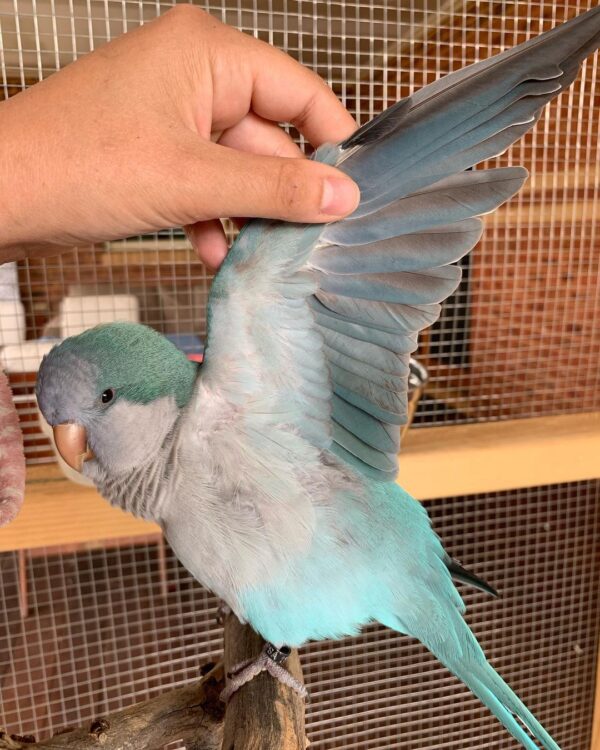 Whether it's a parrot - put him in a cage and enjoy! nine0003
Whether it's a parrot - put him in a cage and enjoy! nine0003
But do not rush to conclusions. Features of keeping birds in captivity impose certain obligations on the owner. Sometimes poultry houses have to endure not very pleasant forms of behavior of their winged pets.
A rather strange feature is the difference between parrots, accustomed to biting the owner, and not only, by the finger. Most often this happens because a person, unwittingly, with his inept actions, accustoms the bird to this way of behavior. Therefore, before accusing a defenseless creature of anomalous aggression, it is worth thinking about the reasons. nine0003
It should be noted that under natural conditions, parrots rarely show aggression. Their beak is intended primarily for communication with their own kind, climbing branches and obtaining food. And getting into unusual conditions, the bird uses it as the main tool for getting to know the outside world.
-
It would be a mistake to think that, by biting a finger, a parrot in a cage wants to turn the whole world against itself.
 In the case of young chicks, this behavior is explained quite simply: acquaintance with new conditions occurs with the help of this particular part of the body, when the bird tries to “taste” the safety of the environment. First of all, they are driven by curiosity. nine0003
In the case of young chicks, this behavior is explained quite simply: acquaintance with new conditions occurs with the help of this particular part of the body, when the bird tries to “taste” the safety of the environment. First of all, they are driven by curiosity. nine0003 -
Another reason for the strange behavior of a parrot is fear and self-defense. Perhaps the sharp movements of a person are new to the bird and the desire to violate its personal space turns into a natural reaction to bite the barbarian's finger.
By the way, the owner himself, often screaming loudly from a bite, does not even suspect that in this way he can fix a model of behavior in a bird for this situation. Since parrots are noisy and vociferous birds, they do not spare their ligaments to communicate with their own kind. And it is the piercing cry of a person that they can regard as a kind of call to the game. And if you once again stick your finger into the cage, the chick will automatically respond in the hope of hearing a ringing voice, he likes it. nine0003
nine0003
In order not to fall for this trick next time, you need to follow some communication rules:
- You need to tame the bird gradually - it is desirable to fix the cage with the parrot at eye level. If you lower it below, then the pet will be afraid; if you put the cage above the level of the head, the parrot will feel its superiority;
- if the bird was purchased recently, give it some time, say, a week to adapt and do not sit next to it for a long time, and stretch food and water into the cage without sudden movements; nine0024
- when the chick gets used to it, try to accustom it to your presence during the meal, and then try to feed the parrot by hand;
- to refrain from sharp cries after the next bite, otherwise it will not be possible to remove the ingrained habit.
With older birds, it will be a little more difficult, as they usually have a well-formed behavior pattern. But even in this case, you can find an approach to become a friend for your pet.






